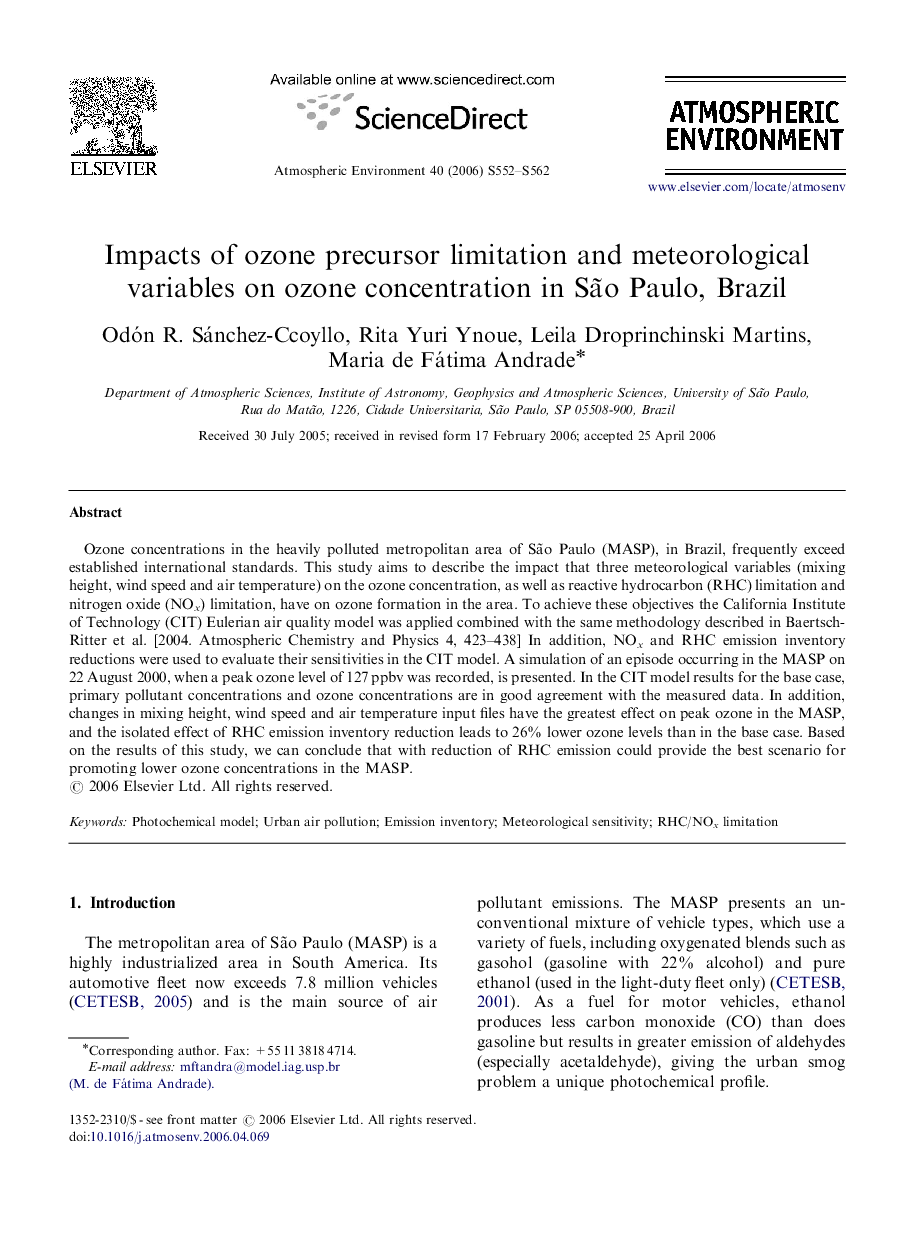| Article ID | Journal | Published Year | Pages | File Type |
|---|---|---|---|---|
| 4445123 | Atmospheric Environment | 2006 | 11 Pages |
Ozone concentrations in the heavily polluted metropolitan area of São Paulo (MASP), in Brazil, frequently exceed established international standards. This study aims to describe the impact that three meteorological variables (mixing height, wind speed and air temperature) on the ozone concentration, as well as reactive hydrocarbon (RHC) limitation and nitrogen oxide (NOx) limitation, have on ozone formation in the area. To achieve these objectives the California Institute of Technology (CIT) Eulerian air quality model was applied combined with the same methodology described in Baertsch-Ritter et al. [2004. Atmospheric Chemistry and Physics 4, 423–438] In addition, NOx and RHC emission inventory reductions were used to evaluate their sensitivities in the CIT model. A simulation of an episode occurring in the MASP on 22 August 2000, when a peak ozone level of 127 ppbv was recorded, is presented. In the CIT model results for the base case, primary pollutant concentrations and ozone concentrations are in good agreement with the measured data. In addition, changes in mixing height, wind speed and air temperature input files have the greatest effect on peak ozone in the MASP, and the isolated effect of RHC emission inventory reduction leads to 26% lower ozone levels than in the base case. Based on the results of this study, we can conclude that with reduction of RHC emission could provide the best scenario for promoting lower ozone concentrations in the MASP.
